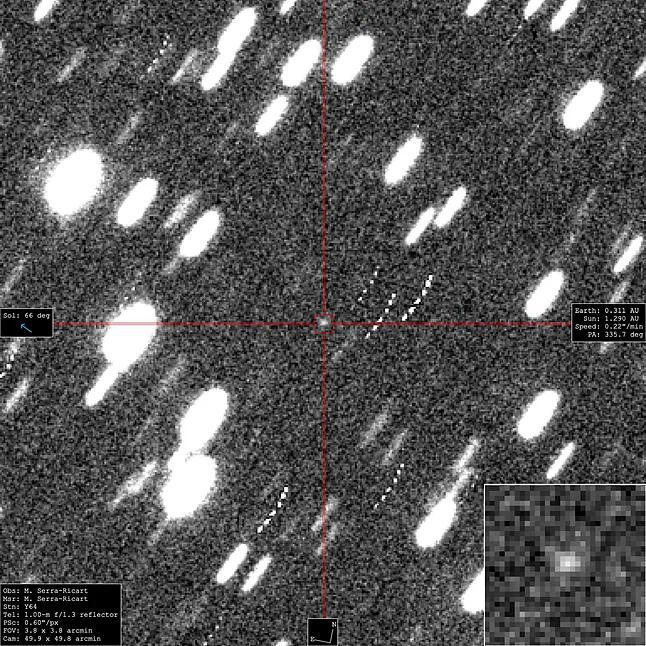The astronomical community continues to observe the asteroid 2024 YR4 before it becomes invisible to ground telescopes by mid-April to better determine its orbit and assess the true risk of impact with our planet during its approach on December 22, 2032. 2024 YR4 is estimated to be between 40 and 90 meters in diameter and if it were to collide with a populated area on Earth, it would have the capacity to destroy a city, according to experts.
This week, NASA has increased the probability of impact from 2.3% to 2.6% for that day, while the European Space Agency (ESA), which had previously set that percentage at 2%, has increased it to 2.4% this Tuesday.
However, there has been no change in the risk classification on the Torino Scale, which consists of 10 levels, keeping it at level number 3. This scale classifies Near Earth Objects (NEOs), such as asteroids and comets, according to their impact hazard. It ranks those with no probability of impact at level zero, while levels 8, 9, and 10 are reserved for those with a certain impact (with different consequences).
Level 3 includes asteroids that will have a "close encounter" with Earth and "deserve attention from astronomers, authorities, and the public," as they are capable of "causing destruction at a local level," although "most likely, new and more precise observations will redirect the danger to level 0."
So far, no asteroid has exceeded level 4. Only Apophis, a rock over 350 meters discovered in 2004, had surpassed level 1 on the Torino Scale, reaching level 4 due to the risk of impact with our planet during its approach in 2029. However, as its orbit was better studied, scientists ruled out any risk of impact.
The same is hoped to happen with 2024 YR4, the asteroid discovered on December 27 from the ATLAS telescope in Río Hurtado, Chile. However, the probability of impact has been increasing since the end of January when the United Nations activated the Planetary Defense protocols established about a decade ago for the first time.
In addition to studying it with the best ground telescopes until it moves away from our planet and becomes visible again in 2028, it is planned to observe it with the James Webb Space Telescope in early March. These observations are expected to better determine its size. According to studies by the Institute of Astrophysics of the Canary Islands, measurements indicate that the rock is closer to 50 meters than 90 meters.
